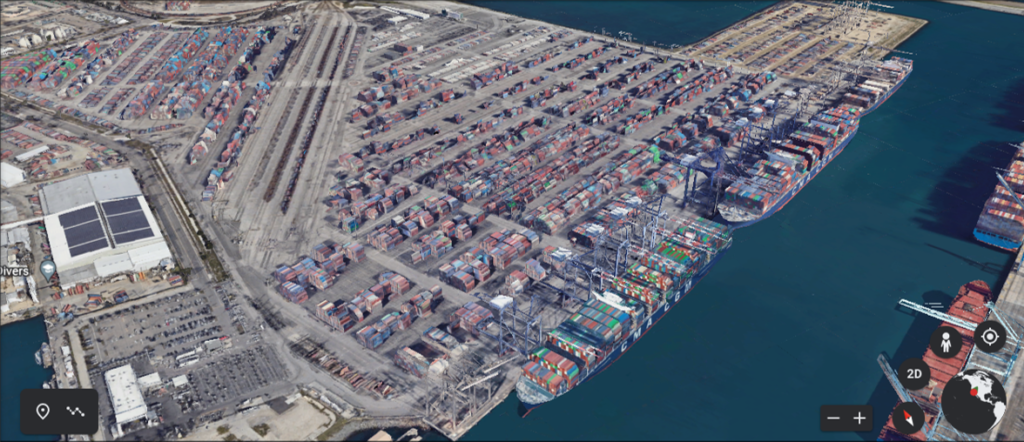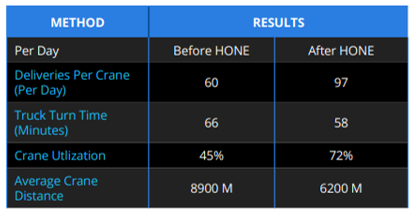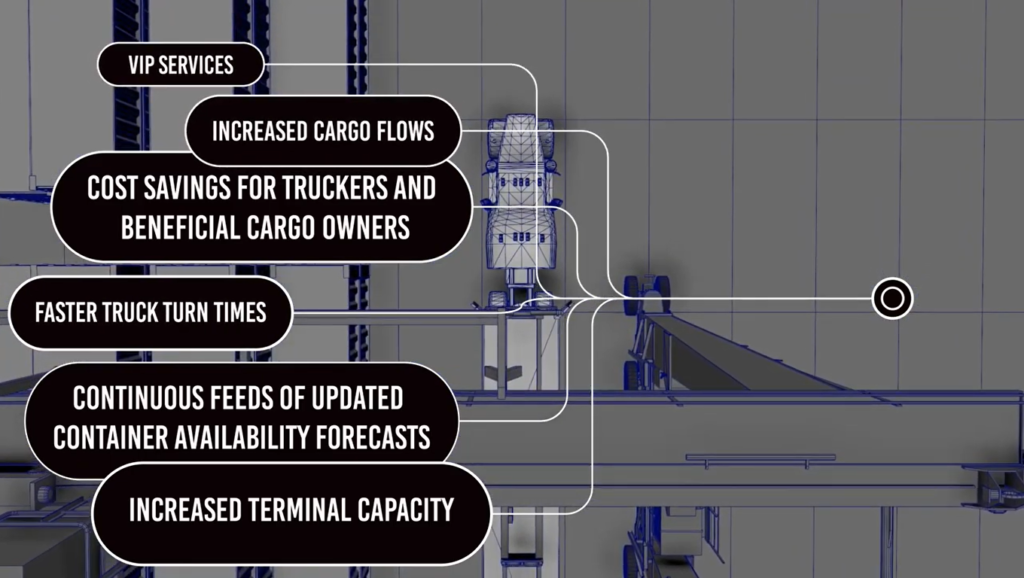
Earlier this year, we reported on an logistics optimization program at Pier 300 at the Port of Los Angeles accomplished by a team from SavantX and Fenix Marine Services to optimize the logistics at the Pier 300 container terminal project at the Port of Los Angeles, one of the largest marine terminals in the US. At the pier, shipping containers would be off-loaded from the ships and placed temporarily in a storage yard for subsequent pick up. Later on, trucks would come to pick up their individual loads and a massive movable crane called an RTG (Rubber Tire Gantry) would move to the location of the container, pick it up, and place it on the truck. The problem is that bottlenecks could occur in this process and they could have excessive movement of the RTG and the trucks may have a long waiting time before they received their container.
The team used a program from SavantX called HONE (Hyper Optimization Nodal Efficiency) that utilized optimization algorithms on the D-Wave quantum annealer and they are now reporting improvements ranging from 30% to 60% as shown in the chart below depending upon which metric. These improvements are worth millions of dollars.
We have seen a lot of announcements about quantum companies working with end users but when we look into them further we see that they are almost all at the research or proof-of-concept stage, but not in regular production use. Sometimes companies will do an experiment to show that there is some potential in using quantum computing, but they never end up putting it into production. We wrote an article about this last year titled The Last Mile Might be the Toughest that explains some of the challenges it takes to put a quantum application into production.
So we decided to interview the team at SavantX to understand the status and if this particular application was in full production. We learned quite a few things. First, we found out that the team has been working on this project for three years. The first 18 months was spent in putting together an initial implementation and the second 18 months was in optimizing the implementation. We also learned that this application is indeed in full production. The application is continuous optimizing the logistics and is making a call to the D-Wave annealer roughly every 10 seconds for two shifts a day. They also indicated that the reliability of the D-Wave systems was very good and have hardly experienced any downtime issues.
But we also learned that these improvements was not just simply a matter of switching from a classical optimization program to a quantum one. The team put a lot of work into building a digital twin of the operations at the pier, fully understand the logistics, figure out which metrics are most important, and experiment with different algorithms to see which one worked the best. As an example, they found that when trucks are waiting in line to pick up their load, using a FIFO ordering for them to pick up their container is not the best way of doing it. In many cases, it might be better to let the third of fourth truck in the line go ahead because that will minimize the movements of these RTG crane. The total movement per day of the RTG was one of the key metrics they discovered. In another case, they found that when unloading a ship that has come arrived, it is not best to put all the containers from that ship in the same area in the storage yard. This is because a bunch of trucks come in to pick up the containers will create a bottleneck because they will all want to get into the same area at the same time to pick up their loads. The team subsequently switched the algorithm to spread out the placement of containers from a specific ship to many areas within the storage yard. This allows multiple trucks to be handled in parallel as they pick up their loads.
So the question comes up, was using a quantum computing the major factor in achieving the improvements. Probably not. We believe the key factor for these improvements was the work in creating the digital twin, optimizing the algorithms, and integrating the process into the procedures used by the operations personnel at the port. Could the team have used a classical optimizing program to achieve the same result? Perhaps. The team did not do an exhaustive analysis of all the latest classical optimization solutions that are out there. But they chose the D-Wave annealing solution because they were most familiar with it and it did provide a good job for their needs.
For quantum providers the lesson may be that having an absolute quantum advantage over the best classical algorithms, might not always be an absolute requirement to obtaining production revenue. But making it easy for an end user to use a quantum solution may allow them to win some business over classical as long as it is good enough. And the lesson for end users that simply moving a solution from classical to quantum without making other changes may not be enough. As people look at various problems where quantum might be used, it is imperative to work with the subject matter experts and figure out how quantum fits into the entire system to get the results desired from utilizing quantum technology.
There is some good documentation and white papers that provide additional information about this project that we can recommend to interested readers. D-Wave has published a case study that you can find on their website here. SavantX has just published a 14 page white paper that they have posted on LinkedIn here. A web page for the HONE software is available on the SavantX web page here. Also, D-Wave and SavantX hosted a webinar in May 2022 about this project and you can find the recording of it on YouTube here.
November 26, 2022



